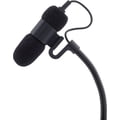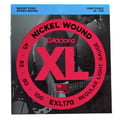Modes Scales and their use demystified
Membre
Posts: 374
Joined: 25 mars 2012
I made this for a user here but i thought everybody could benefit from it so here is is: Music theory compressed into 1(!) excel sheet.
if you open the tab named examples it should be quite self-explanatory. Otherwise, don't hesitate to post any questions
Edit: I DID attach the xcl file but it does not show u here...
if you open the tab named examples it should be quite self-explanatory. Otherwise, don't hesitate to post any questions
Edit: I DID attach the xcl file but it does not show u here...
+1
SUPPORTER
Posts: 2942
Joined: 30 déc. 2010
I checked, the attached files had blank spaces in the files names, that broke the attachment display...
found yet another bug to fix, I'll provide the renamed attachments now, sorry about that!
Dick attached the following file:
keys_and_modes.xls
Edited by Dick on 23 novembre 2017 à 12:26
found yet another bug to fix, I'll provide the renamed attachments now, sorry about that!
Dick attached the following file:
keys_and_modes.xls
Edited by Dick on 23 novembre 2017 à 12:26

the t.bone Ovid System CC 100
Condenser Clip Microphone for Ovid System

49 €
iThis widget links to Thomann, our affiliate partner. We may receive a commission when you purchase a product there.
Visit Shop
SUPPORTER
Posts: 2942
Joined: 30 déc. 2010
the german version, credit goes to Nilton please :)
Dick attached the following file:
tonarten_und_moduse.xls
Dick attached the following file:
tonarten_und_moduse.xls
SUPPORTER
Posts: 2942
Joined: 30 déc. 2010
I'd like to feedback that "moduse" is not the correct plural of modus in german, the word is not related to "Medusa" to my knowledge, so one would probably have to fall back to "modi".
:P
I have just taken a first look at the chart and... wow, that looks a bit hard to get a grip on for someone self-taught like me.
To point you at something that irritated me, maybe that can be changed/improved:
Would it be possible to use the same root-note to demonstrate what you are demonstrating? The fact that you are "comparing" G-major to B-minor makes it harder to grab the difference, couldn't you simply compare all G variants, so the differences became more obvious?
Maybe I got the whole idea of the chart wrong, just giving some really dumb feedback, sorry.
:P
I have just taken a first look at the chart and... wow, that looks a bit hard to get a grip on for someone self-taught like me.
To point you at something that irritated me, maybe that can be changed/improved:
Would it be possible to use the same root-note to demonstrate what you are demonstrating? The fact that you are "comparing" G-major to B-minor makes it harder to grab the difference, couldn't you simply compare all G variants, so the differences became more obvious?
Maybe I got the whole idea of the chart wrong, just giving some really dumb feedback, sorry.
Membre
Posts: 374
Joined: 25 mars 2012
The excel sheet is based on the circle of fifths and extended to cover all modes, not only major/ionian and minor/aeolian.
This is how it works:
Any column contains the notes associated with a certain key signature, that is the number of #'s or b's. These notes are repeated two times because of the cyclical nature of the system is pushed into a square matrix (we have there before, haven't we?). Each diatonic key has seven modes, major/ionian and minor/aeolian being the most common but the others are frequently used as well. If you look in the examples tab i included a number of examples for each mode (in no particular key preference) to clarify the differences between, the experience and common feelings associated with each mode.
To find the notes in for example A-dorian (or any other key/mode combination) you follow the row for the dorian mode (row 2) until you find the note A (col2) This note and the 6 following (in the same column) (A, B, C, D, E, F#, G) make up the A-dorian mode. If these notes are viewed without respect to any root note G-major, A-dorian, B-phrygian, C-Lydian, D-mixolydian, E-minor, and F#-locrian would be identical. But they are not, what distinguishes them is a) the root note, or rather "Tonal Center" and b) The characteristic note indicated by the arrows in the leftmost column. So if you play a lick consisting of the notes in A-dorian that emphasizes F# of a bassline with a tonal center of A you would definitely get a dorian feel. A tip is to play the pentatonic that fits the mode (minor for dorian, phrygian and aeolian, major for ionian, lydian and mixolydian) with the addition of the characteristic note indicated by the table. Locrian is a bit difficult but not many compositions utilize this mode.
What you are asking, the relationship between G-major/ionian and G-minor/aeolinan involves a modulation or change of key since you need to move from one column to another. This gives a quite dramatic effect and there are some theories for that as well, but i think that would be another topic of its own.
What you can do if you are interested in comparing two modes of the same root is to copy and paste them into the empty tab side by side. Go to the first row (major) and second column (G, 1#) and select the first seven cells in that column and paste them into empty space in the third tab. Now got to the sixth row (minor) and second column from the right (G, 2b), select the consecutive seven cells from that column and paste them adjacent to the first one. Now you should have:
G G
A A
B Bb
C C
D D
E Eb
F# F
So you see that these scales differ by 3 notes B/Bb, E/Eb, F#/F. These differences can also be deduced by looking at the key signatures alone, G-major having 1# (F#) and G-minor having 2b (Bb, Eb). If we want to extend the analysis we can see that the differences correspond to scale degrees 3, 6, 7. All of these are major in the major scale (4, 9, 11 semitones) and minor in the minor scale (3, 8, 10 semitones). Hence the name of the scales. The german (and Scandinavian)designations "Dur" and "Moll" are derived from Latin meaning "Hard" and "Soft" since the major ones have a harder, more brittle, sound.
Here is a video that is a little more elaborate on your question:
[youtube]apqaZJ27biQ[/youtube]
Sorry for the wrong plural form, i was too lazy to look it up.
This is how it works:
Any column contains the notes associated with a certain key signature, that is the number of #'s or b's. These notes are repeated two times because of the cyclical nature of the system is pushed into a square matrix (we have there before, haven't we?). Each diatonic key has seven modes, major/ionian and minor/aeolian being the most common but the others are frequently used as well. If you look in the examples tab i included a number of examples for each mode (in no particular key preference) to clarify the differences between, the experience and common feelings associated with each mode.
To find the notes in for example A-dorian (or any other key/mode combination) you follow the row for the dorian mode (row 2) until you find the note A (col2) This note and the 6 following (in the same column) (A, B, C, D, E, F#, G) make up the A-dorian mode. If these notes are viewed without respect to any root note G-major, A-dorian, B-phrygian, C-Lydian, D-mixolydian, E-minor, and F#-locrian would be identical. But they are not, what distinguishes them is a) the root note, or rather "Tonal Center" and b) The characteristic note indicated by the arrows in the leftmost column. So if you play a lick consisting of the notes in A-dorian that emphasizes F# of a bassline with a tonal center of A you would definitely get a dorian feel. A tip is to play the pentatonic that fits the mode (minor for dorian, phrygian and aeolian, major for ionian, lydian and mixolydian) with the addition of the characteristic note indicated by the table. Locrian is a bit difficult but not many compositions utilize this mode.
What you are asking, the relationship between G-major/ionian and G-minor/aeolinan involves a modulation or change of key since you need to move from one column to another. This gives a quite dramatic effect and there are some theories for that as well, but i think that would be another topic of its own.
What you can do if you are interested in comparing two modes of the same root is to copy and paste them into the empty tab side by side. Go to the first row (major) and second column (G, 1#) and select the first seven cells in that column and paste them into empty space in the third tab. Now got to the sixth row (minor) and second column from the right (G, 2b), select the consecutive seven cells from that column and paste them adjacent to the first one. Now you should have:
G G
A A
B Bb
C C
D D
E Eb
F# F
So you see that these scales differ by 3 notes B/Bb, E/Eb, F#/F. These differences can also be deduced by looking at the key signatures alone, G-major having 1# (F#) and G-minor having 2b (Bb, Eb). If we want to extend the analysis we can see that the differences correspond to scale degrees 3, 6, 7. All of these are major in the major scale (4, 9, 11 semitones) and minor in the minor scale (3, 8, 10 semitones). Hence the name of the scales. The german (and Scandinavian)designations "Dur" and "Moll" are derived from Latin meaning "Hard" and "Soft" since the major ones have a harder, more brittle, sound.
Here is a video that is a little more elaborate on your question:
[youtube]apqaZJ27biQ[/youtube]
Sorry for the wrong plural form, i was too lazy to look it up.

SUPPORTER
Posts: 533
Joined: 25 nov. 2013
Just a quick note (if that’s possible from me or Martin, Ha!) : Wikipedia lists 56 modes, and that's just the ones following "western" notation (12 tone) tradition. There are heaps of others that use non-western tones and scales. Each Indian Raga that uses a different set of tones could be looked at as a "mode" of its own.
The reason for adding this information isn't that the limited number of modes above are wrong...they just represent the different start points at which you would play in a particular key that would give you a those (limited) "flavors" The other 42 "western scale" modes are more than worth exploring as each has a distinctive flavor. There are variations within these as well so the number is probably several times that (e.g. Hungarian minor has at least four variants). Different (non-western) tunings also impart a strong "flavor". Short funny story: An early musical memory is of a garage band playing for teenagers (I was slightly younger). The bass player didn't tune his bass properly with his lowest string 1/2 tone flat. The resulting sound I still remember as sounding amazing. Calliopes also often have bass notes that are similarly very flat and it gives a distinct flavor to the sound. Any of you bass players game to give it a go?
The reason for adding this information isn't that the limited number of modes above are wrong...they just represent the different start points at which you would play in a particular key that would give you a those (limited) "flavors" The other 42 "western scale" modes are more than worth exploring as each has a distinctive flavor. There are variations within these as well so the number is probably several times that (e.g. Hungarian minor has at least four variants). Different (non-western) tunings also impart a strong "flavor". Short funny story: An early musical memory is of a garage band playing for teenagers (I was slightly younger). The bass player didn't tune his bass properly with his lowest string 1/2 tone flat. The resulting sound I still remember as sounding amazing. Calliopes also often have bass notes that are similarly very flat and it gives a distinct flavor to the sound. Any of you bass players game to give it a go?
Membre
Posts: 374
Joined: 25 mars 2012
Of course there are more modes than listed but that is not the point of this post. What i have experienced is that there are people having problems understanding even this simple system of 7 modes by perceiving it overly complex and not knowing how to apply it. My post was an attempt to rectify this by simplifying and demystifying. You have to start somewhere, and downloading the xls might be a good step. Especially the examples might help.
+1

Daddario EXL170
Electric Bass String Set

22,90 €
iThis widget links to Thomann, our affiliate partner. We may receive a commission when you purchase a product there.
Visit Shop
wikiloops online jamsessions are brought to you with friendly
support by:

the best thing to happen for musicians since electricity was invented
FrankMil